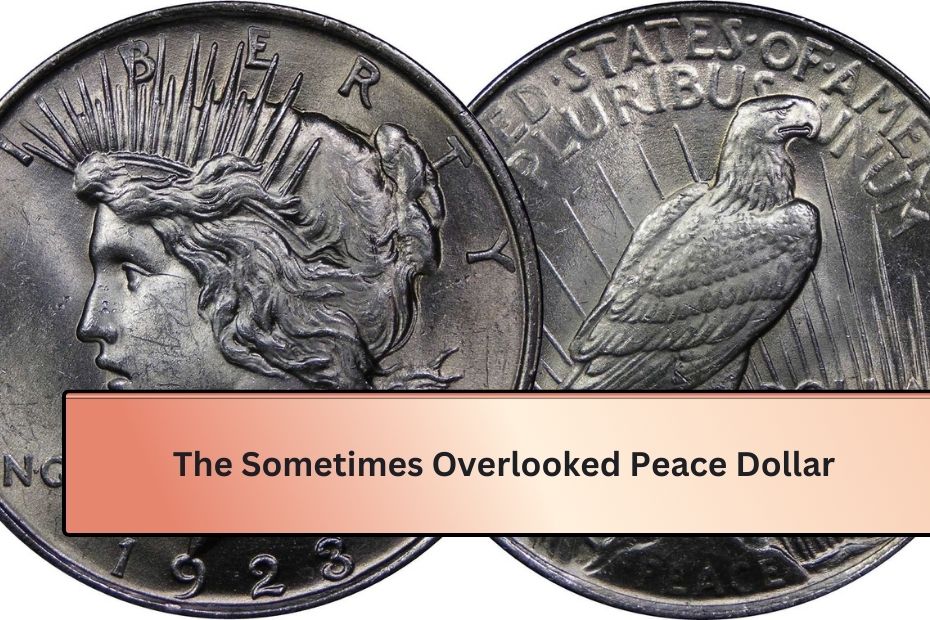When you think about American dollar coins, the Morgan dollar often comes to mind. However, the Peace dollar has its own fascinating story. This coin, which represents a time of change and hope after World War I, is beautiful and full of interesting details. Although not as famous as the Morgan dollar, it holds a special place in the hearts of collectors and historians alike. In this article, we will explore the history of the Peace dollar, how it came to be, and what makes it unique.
The Need for a New Dollar
The Morgan dollar was introduced in 1878 and was minted continuously until 1904. By the time of World War I, over 500 million Morgan dollars were in circulation. To support their English allies during the war, Congress passed the Pittman Act of 1918. This law allowed the U.S. to melt down a large number of silver dollars to provide bullion for the war effort.
Because of this act, over 270 million silver dollars, nearly half of all Morgan dollars, were melted down. As the war ended, there was a growing desire for a new silver dollar to symbolize peace and victory. Although the idea of a new coin gained popularity, Congress did not immediately approve it.
Luckily, the Morgan dollar had been in circulation for more than 25 years, allowing the Secretary of the Treasury to decide on a new design without needing Congress’s permission.
The Design of the Peace Dollar
In May 1921, a meeting took place to discuss the design of the new Peace dollar. Mint Director Raymond T. Baker, designer James Earle Fraser, and U.S. Commission of Fine Arts Chairman Charles Moore decided to hold a competition. The winner would receive $1,500.
Design submissions were due by December 12, 1921. The winning design would feature the head of Lady Liberty on one side and an eagle on the other, following the Coinage Act of 1792. After reviewing the entries, the committee unanimously chose Anthony de Francisci’s design, even though he was the youngest and least experienced among the competitors.
De Francisci’s portrayal of Lady Liberty was inspired by his wife, Teresa de Francisci. She wore a radiate crown, similar to that of the Statue of Liberty. De Francisci also created designs for the eagle, which represented both war and peace. The final choice was an eagle at rest, holding an olive branch, symbolizing peace.
However, a design controversy arose over a broken sword on the reverse side. A newspaper editorial criticized the design for its negative connotations. After public feedback, the broken sword was removed, and the design was adjusted.
On December 28, 1921, the first Peace dollars were minted, and over a million coins were produced in just four days. The public got their hands on the first coins on January 3, 1922. Initially, there were issues with the high relief design, which caused problems with the minting process. This led to modifications, and numismatists estimate that only about 6 to 10 high relief Peace dollars remain from the original strikes.
The U.S. Mint produced Peace dollars until 1928, using up the last of the silver from the Pittman Act. Production resumed in 1934, and between 1934 and 1935, another 7 million coins were struck. However, the dies for the Peace dollar were destroyed in 1937, ending its production.
Key Differences Between Proof Coins and Uncirculated Coins
| Feature | Proof Coins | Uncirculated Coins |
|---|---|---|
| Purpose | Collecting, highest quality test | Collecting, never circulated |
| Production Process | Struck multiple times | Struck once |
| Finish | Mirror-like, matte details | Smooth, shiny but less reflective |
| Packaging | Protective packaging | Protective packaging |
| Value | Higher value due to rarity | More affordable, accessible |
Collecting Proof vs Uncirculated Coins
| Aspect | Proof Coins | Uncirculated Coins |
|---|---|---|
| Best for | Serious collectors, gifting | Beginners, affordable collection |
| Appreciation Potential | High, especially in limited runs | Moderate |
| Production Numbers | Lower, often limited editions | Higher production numbers |
| Gift Suitability | Excellent for special occasions | Great for starting collections |
Recent Developments
In January 2021, President Trump signed a law to issue both Morgan and Peace dollars to commemorate the centennial of their transition. The Peace dollars became available in August 2021 and started shipping in October. In November, the U.S. Mint announced that these coins would become an annual product starting in 2022. Today, collectors note that these coins often sell for three times their retail price.
Conclusion
The Peace dollar, while sometimes overshadowed by its more famous counterpart, the Morgan dollar, tells a compelling story of resilience and hope. Its design reflects a pivotal moment in American history, symbolizing peace after the turmoil of World War I. The careful thought put into its design, especially Lady Liberty’s portrayal and the eagle’s symbolism, captures the spirit of the time. For collectors, the Peace dollar is not just a coin but a piece of history worth appreciating. Whether you are a seasoned numismatist or a newcomer to coin collecting, the Peace dollar deserves a place in your collection.
FAQ’s
What is a Peace dollar?
A Peace dollar is a silver coin minted by the U.S. Mint from 1921 to 1935, symbolizing peace after World War I.
Why was the Peace dollar created?
It was created to replace the Morgan dollar and to commemorate the end of World War I, promoting a message of peace.
Who designed the Peace dollar?
The Peace dollar was designed by Anthony de Francisci, inspired by the features of his wife, Teresa.
What are the main features of the Peace dollar?
The Peace dollar features Lady Liberty on the front and an eagle holding an olive branch on the back, symbolizing peace.
When did the production of Peace dollars stop?
Production of Peace dollars officially stopped in 1935, with the last coins struck in that year.

